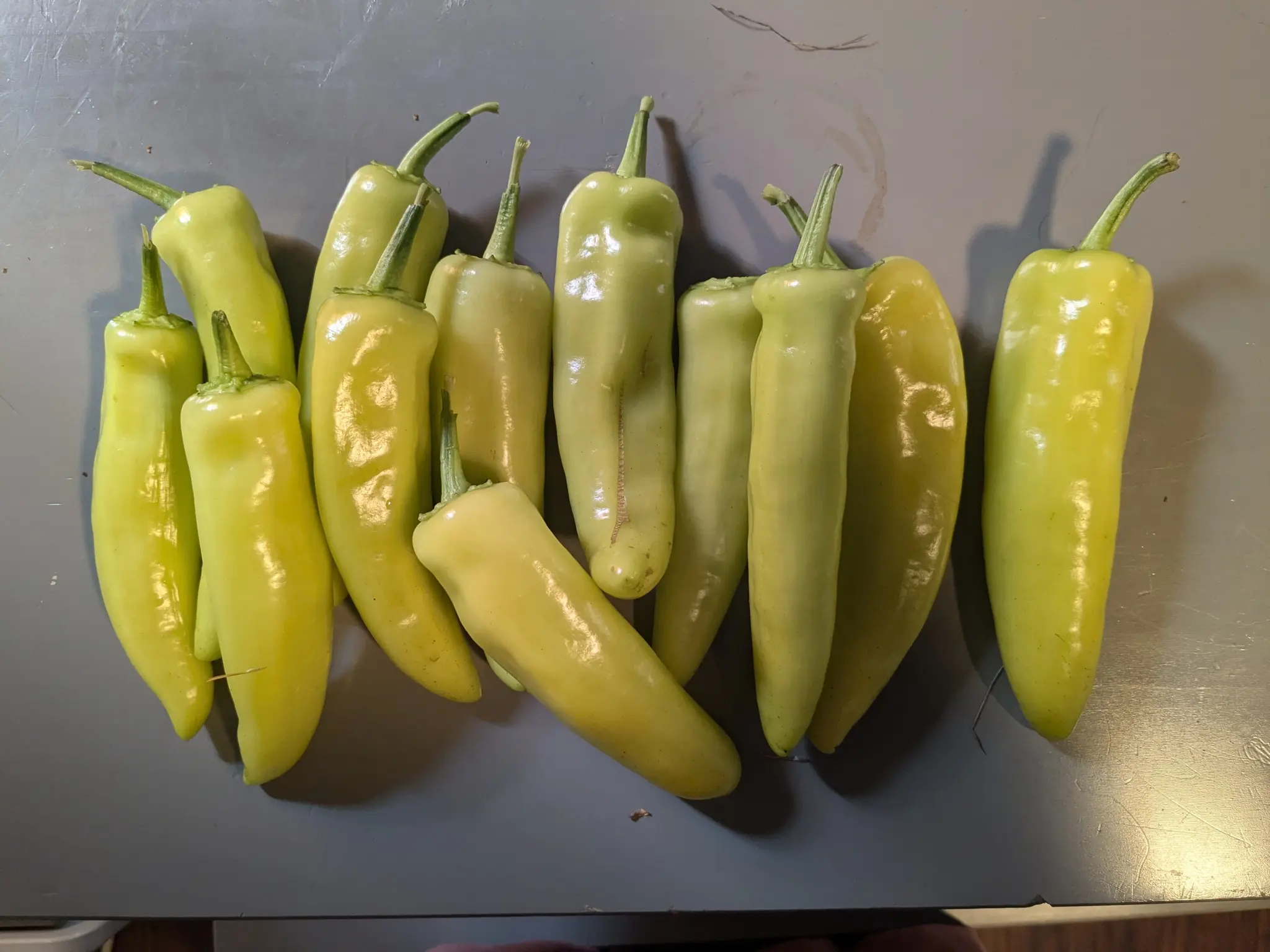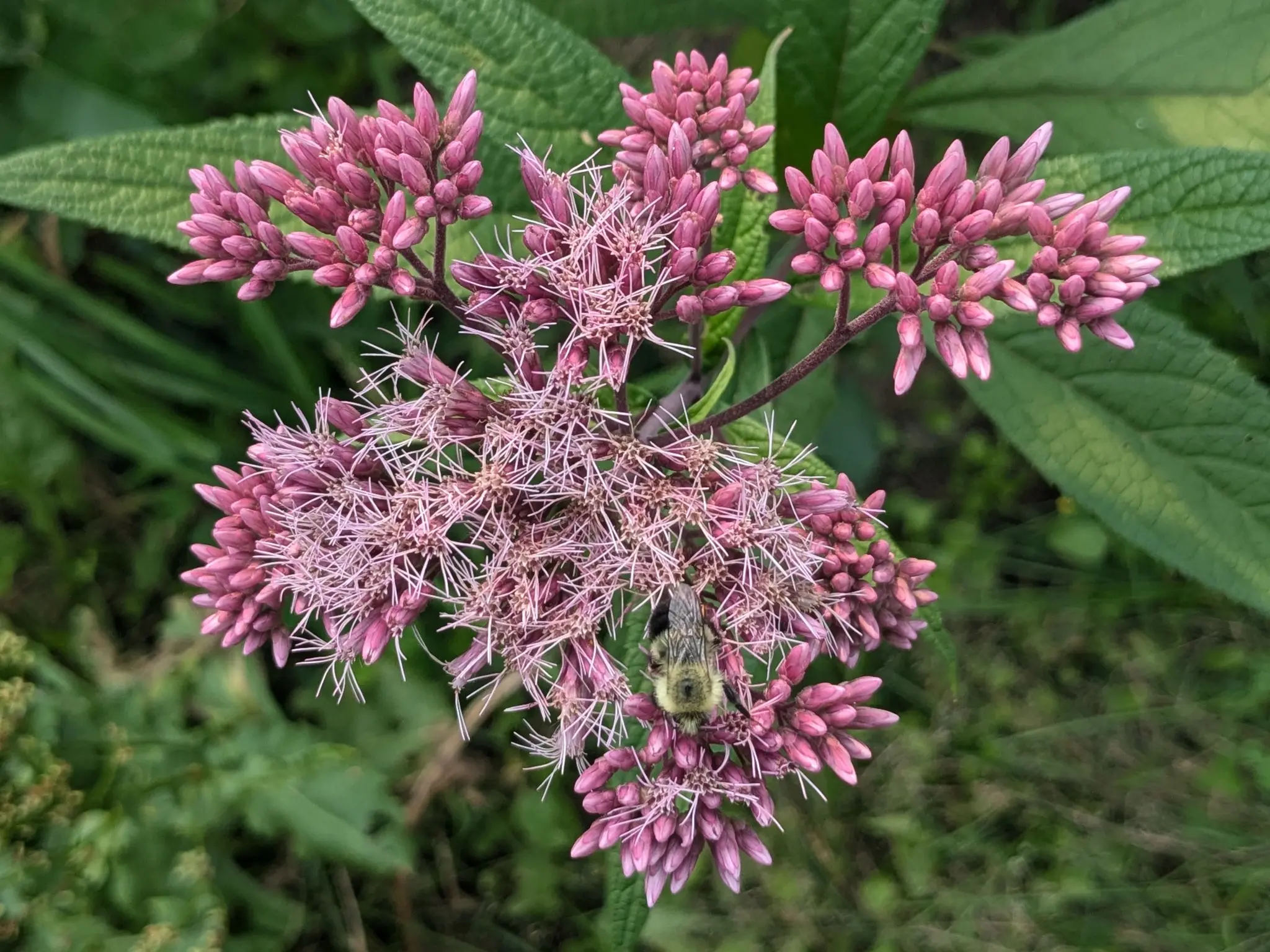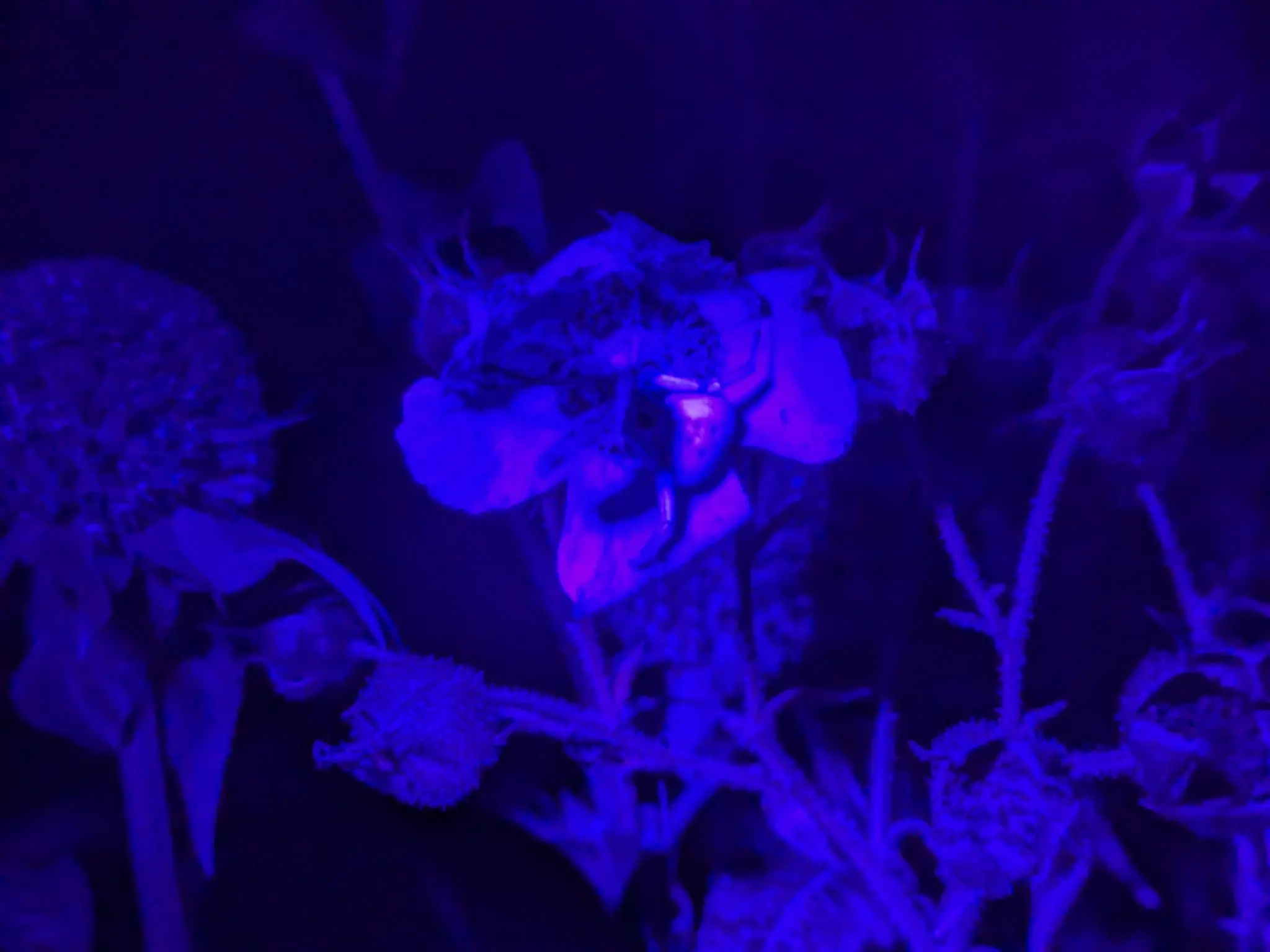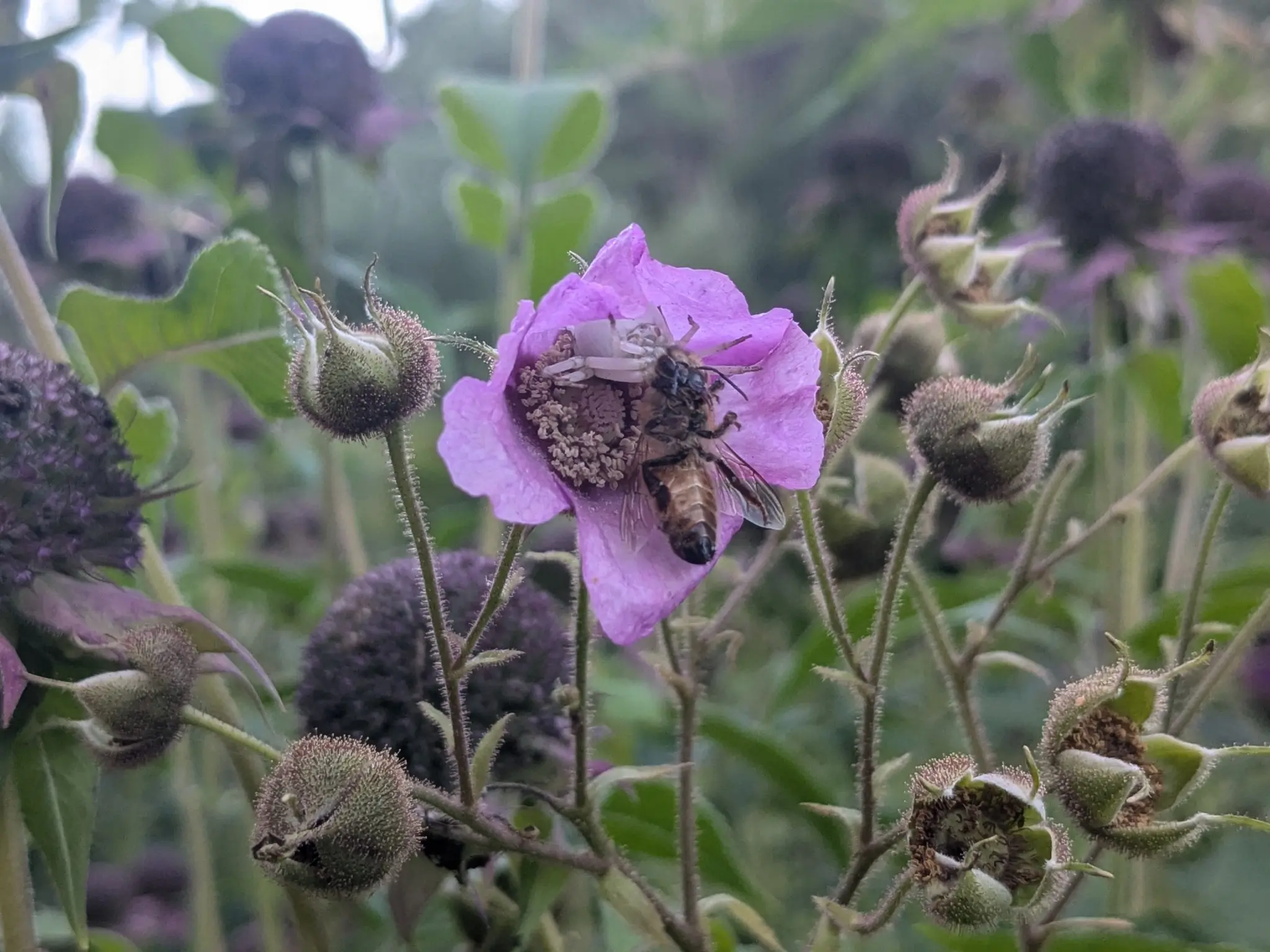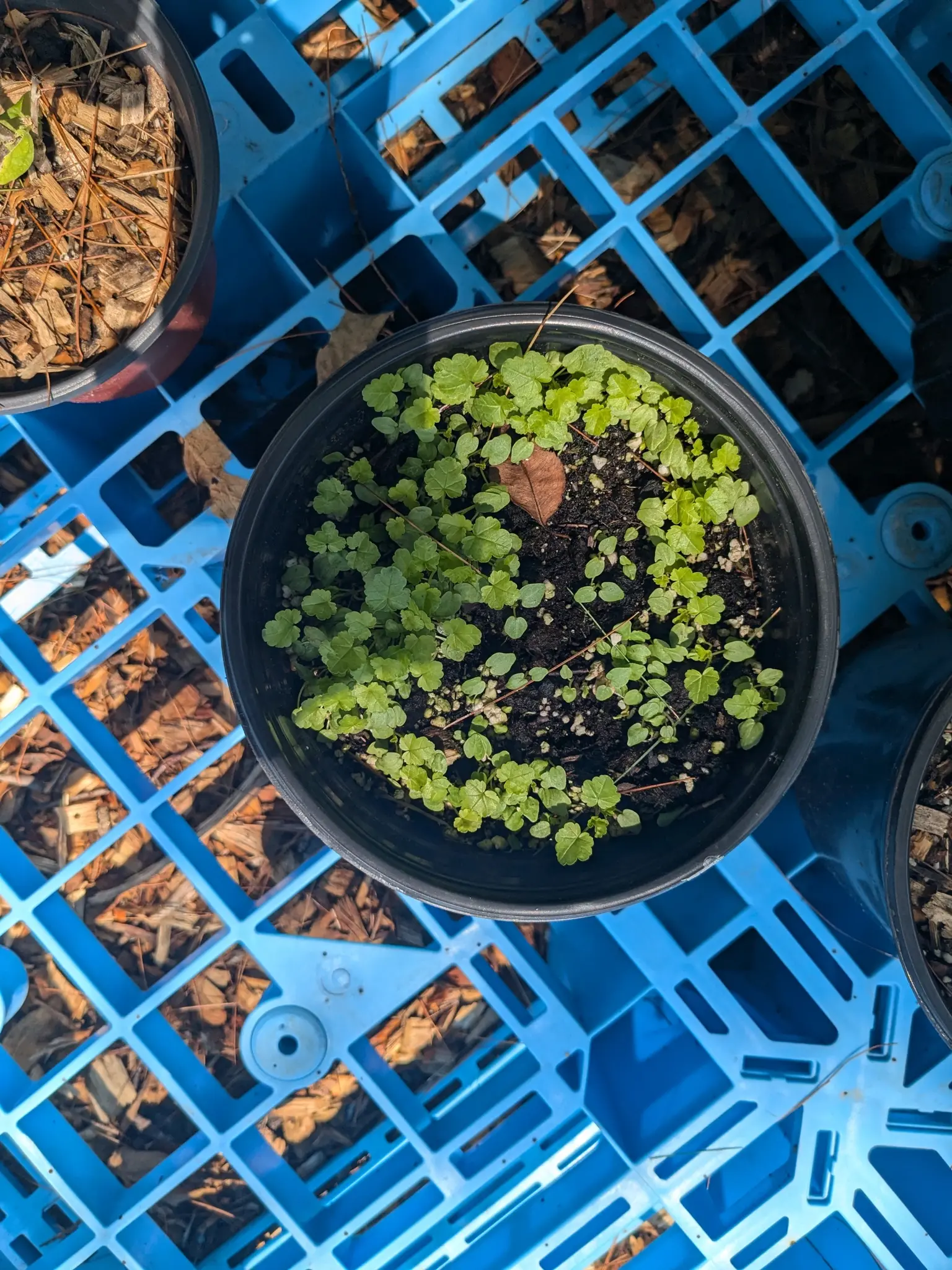- Run a small mill for grains or herbs
- Pump water to irrigate plants
- Aerate a pond
- Community device charging station
- Organize with fellow citizens to change that
Yes, exactly! It's a small shrub, topping out around 1m, that produces the same compounds found in Camellia sinensis, the plant that most teas come from. We make a black tea by oxidizing the leaves before drying, and add in some of the leaves from our bee balm (Monarda spp) to make a very close approximation of "Earl grey". During the period around the American revolution, it was used to avoid paying for the imported British tea and helped to make the case for independence. The roots have historically been used by herbalists for its hepatoprotective, lymphatic, antispasmodic, antiseptic, and expectorant qualities, though most commonly for liver conditions.
It's also a nitrogen fixing plant, which helps to build soil health and fertility around it. The flowers attract and support dozens of species of pollinators, including a variety of parasitoid wasps, and the leaves are crucial for several species of butterflies and moths.
My side of the family is slowly trickling into the state for their annual vacations in Maine, for two weeks this year instead of the usual 7 days. It's nice though, getting to see each group when they arrive instead of showing up to 20-something people all at once, all in one house. It will be that level of craziness come Sunday, when they're planning to throw (yet another) baby shower for us. Much as I enjoy not spending money, three baby showers is too damn high. I'm hopeful that my brother found the copy of Go the F#$k to Sleep we gave them when my niece was born.
One of our ducks, Pearl, hatched out a dozen little babies under my potting bench. While she's exceptional at hatching them, she is a less than stellar mother and I have been responding to alarm peeps regularly while she sits around with the ones who manage to keep up with her.
There's just so much hidden goodness inside! My last playthrough has me struggling less, and I found more, but apparently I just wasn't thorough enough
Trying to actually get the good ending in Tunic, not too proud to admit I'm using a tracker this time around. And wow, I passed up SO. MUCH. last time around
Iirc the leaked internal docs and reporting showed that nvidia was downloading 81 years worth of video per day. If the pattern holds, and we "throw" the books at them, it probably looks a lot like one of those building-sized front end loaders dropping the library of Alexandria on those executives.
As an alternative, I would be fine if nvidia were no longer allowed to hold copyright or trademarks since the company believes that those don't matter, required to share all internal documents (including any and all planning), and required to open source all their code until the company implodes
Here's hoping the plaintiffs can bring the leaked internal docs from nvidia's management directing engineers to violate the TOS of several sites to show a pattern of malfeasance, and that the judge has at least a modicum of understanding regarding these topics. Throw the book(s) at 'em.
To the file holder of the gdrive, it says no access.
And I was under the impression you were further than that, that's definitely manageable!
Absolutely! I ship fall/spring but if you're ever down by the Ogunquit/Berwicks area for stuff you are invited!
I have sent an access request
'300' meme but they're helping someone out of the pit instead while "This. Is. Beehaw" is shouted
If you'd like any of my plants this fall shipping season, they're yours
Wow, you're incredible! Again, from the very subcockles of my heart - Thank you!
